Analogy Mapping
Because all learning involves developing a transfer of relationships among ideas or phenomena, analogies play an important role in science and education. They allow us to illustrate abstract concepts, to transfer overarching principles between content, and to use our understanding of familiar phenomena in order to understand new phenomena.
Our content anchors also reflect the importance of comparisons and analogies in evolutionary anthropology, behavioral and sustainability science. The discussion of analogies and the use of analogy maps in the classroom fosters networked learning and learning transfer.

For example:
What are the similarities and differences in the environmental conditions and characteristics of humans and other species?
What are the similarities and differences in challenges to our ancestors’ survival and today’s challenges of sustainable development?
What are the similarities and differences in the behaviors of people of different ages and socio-cultural backgrounds?
What are the similarities and differences in the conditions, observed behaviors, and outcomes of a behavioral experiment and in the real world?
What are the similarities and differences in the conditions, observed behaviors, and outcomes in a computer simulation and in the real world?
What are the similarities and differences in the evolution of living things and the present and future cultural evolution of humanity?
What are the similarities and differences in the evolution of living things and the development of our own behaviors and thoughts over our lifetimes?
What are the similarities and differences between different sustainability problems in the world and at different levels of society?
Teaching Materials that use Analogy Mapping
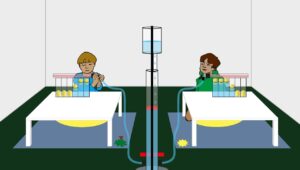
Chimps or children – who is better at sharing resources?
A comparative behavioral research experiment exploring the abilities of chimpanzees and of children to cooperate around a shared resource.
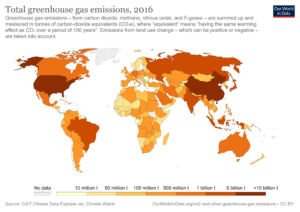
Climate Change Game
A cooperation game that lets students experience some of the challenges of cooperation in addressing global climate change
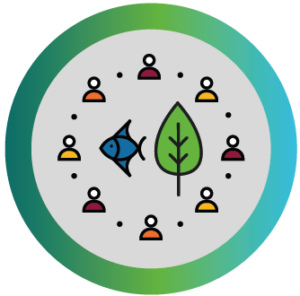
Commons game
In a classroom simulation game with changing conditions students develop strategies for the use of a common resource so that the profit for the entire group is maximized.

Cultural evolution (lesson plan)
Students explore the concept of cultural evolution by comparing it to genetic evolution based on a number of concepts, and explore why cultural evolution is so important in our species.
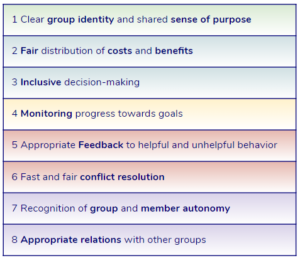
Exploring the Design Principles for Cooperation
Students explore the principles that allow groups to work together and achieve common goals, applying them to the groups that they are a part of or care about.
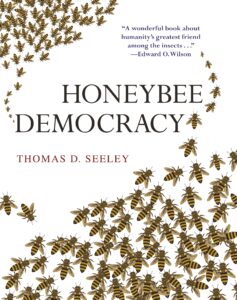
Honeybee Democracy
Students explore how a honeybee swarm makes a decision about their future nesting site, and explore the similarities and differences to how human groups make decisions.

Human Societies as Collective Brains
Human intelligence seems to be a social, more than merely an individual phenomenon. What can we learn from comparing human societies to human brains?
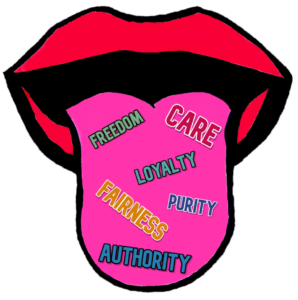
Moral taste buds
In this lesson students explore the causes and functions of, as well as ways to flexibly relate to our moral intuitions by engaging the analogy to our taste buds.
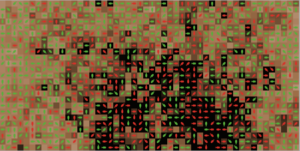
NetLogo Model: Evolution and competition for resources (abstract)
This NetLogo model lets students explore how competition for resources can affect the evolution of a population and can result in resource overuse. This model is similar to the Evolution and competition for forest resources model, but more abstract.
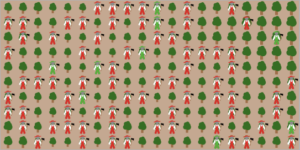
NetLogo: Evolution and competition for forest resources
This NetLogo model builds on the model of Two Foresters. In this model, agents reproduce based on the amount of resources that they harvest.
Teaching for Transfer of Learning
The use of analogy mapping as a teaching tool is related to our overarching design principle of teaching for transfer.
One can say that a primary aim of education in general is to achieve understandings in students that will transfer out of the classroom into the real world and to novel phenomena.
One set of tools that educators use to cultivate these transfer skills is the engagement with analogies, metaphors, models and narratives. These tools are equally important and prevalent in scientific inquiry and science communication. Important in the engagement with and reflection on analogies is the explicit mapping of similarities and differences between analogous phenomena, particularly in terms of principles, processes and behaviors that go beyond mere surface features (Glynn, 2008; Harrison & Treagust, 2006).
Continuous engagement with analogy mappings across content material helps train students’ understanding of the nature of higher-level principles studied in models, experiments, or across case studies in biology and society, and even in everyday experience of ourselves as complex systems, and to understand that a diversity of context-specific instantiations of these principles may exist across these contexts.
Therefore, one of our overarching teaching tools used across various lesson materials is comprised of scaffolded analogy mapping activities with the aim to help students link specific example phenomena to generalized principles in evolution, behavioral ecology, and sustainability.
References
Glynn, S. M. (2008). Making science concepts meaningful to students: Teaching with analogies. In: S. Mikelskis-Seifert, U. Ringelband, & M. Brückmann (Eds.), Four Decades of Research in Science Education: From Curriculum Development to Quality Improvement (pp. 113–125). Münster, Germany: Waxmann.
Harrison, A. G. & Treagust, D. F. (2006). Teaching and Learning with Analogies: Friend or foe? In: Aubusson, P. J., Harrison, A. G., & Ritchie, S. M. (eds.). Metaphor and Analogy in Science Education. Dordrecht, The Netherlands: Springer. p. 11 – 24. https://link.springer.com/chapter/10.1007/1-4020-3830-5_2
Haskell, R. E. (2001). Transfer of Learning. Cognition, Instruction, and Reasoning. Academic Press.
Vendetti, M. S., Matlen, B. J., Richland, L. E., & Bunge, S. A. (2015). Analogical Reasoning in the Classroom: Insights From Cognitive Science. Mind, Brain, and Education, 9(2), 100–106. https://doi.org/10.1111/mbe.12080


